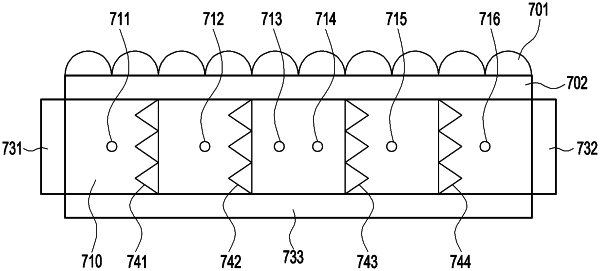| CPC H01L 31/055 (2013.01) [H01L 31/0543 (2014.12); H01L 31/0547 (2014.12); H01L 31/0549 (2014.12); H02S 10/20 (2014.12); H02S 40/30 (2014.12)] | 9 Claims |

|
1. An electronic device comprising:
a polymer including a plurality of quantum dots, wherein the polymer is ferroelectric;
a first solar cell disposed under the polymer;
a second solar cell disposed on a first side of the polymer;
a third solar cell disposed on a second side of the polymer;
a first prism or a first lens disposed in the polymer;
a second prism or a second lens disposed in the polymer; and
a battery configured to be charged with electrical energy from at least one of the first solar cell, the second solar cell, or the third solar cell,
wherein the first solar cell has first photoelectric conversion efficiency in a first wavelength band, the first photoelectric conversion efficiency being equal to or higher than a specified threshold value,
wherein the second solar cell has second photoelectric conversion efficiency in a second wavelength band different from the first wavelength band, the second photoelectric conversion efficiency being equal to or higher than the specified threshold value,
wherein a wavelength of a first portion of first light passing through the polymer is included in the first wavelength band,
wherein a wavelength of a first portion of second light absorbed and then discharged by at least some of the plurality of quantum dots is included in the second wavelength band,
wherein the first prism or the first lens is configured to change a first traveling direction of the second light absorbed and then discharged by the at least some of the plurality of quantum dots to the second solar cell and the first traveling direction is parallel with a top surface or a bottom surface of the polymer, and
wherein the second prism or the second lens is configured to change a second traveling direction of the second light absorbed and then discharged by the at least some of the plurality of quantum dots to the third solar cell and the second traveling direction is parallel with the top surface or the bottom surface of the polymer.
|